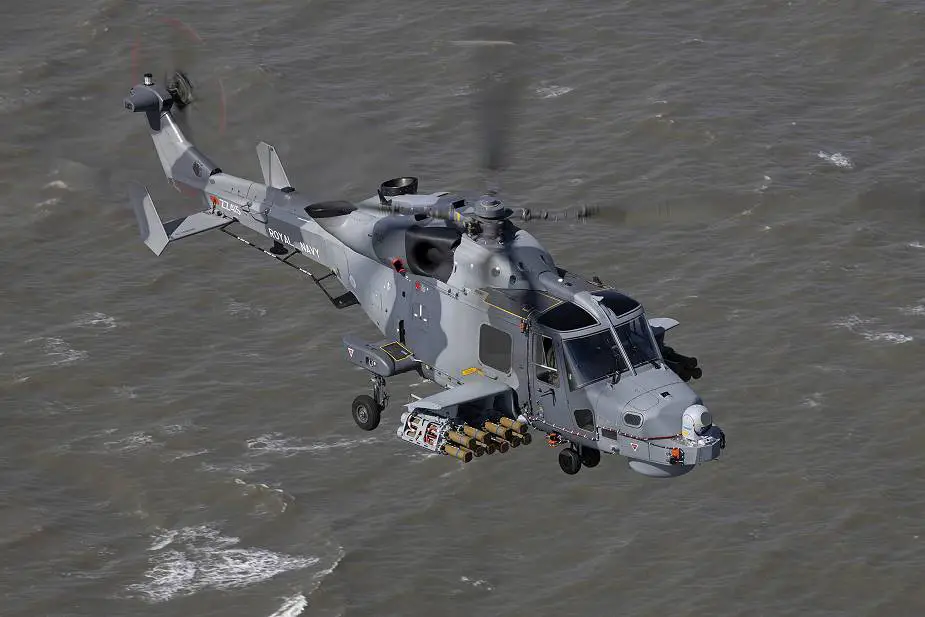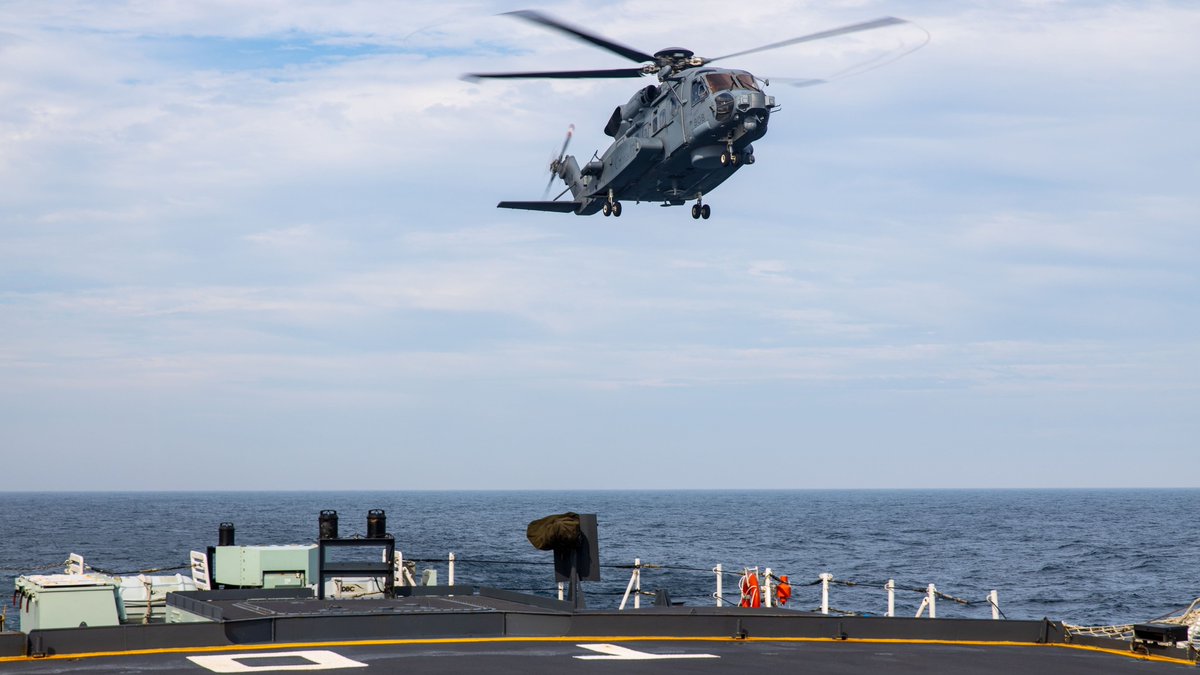Underway said:
IIRC the attachment points for the helo are universal, so where you place the torp you can place any helo carried weapon system. I know CANSOFCOM's ears perked up when they heard that. So quick huddle troops... "get CANSOFCOM super interested and they will pay for helo upgrades....". I wouldn't be the first time.
The BRU (Bomb Release Unit) is universal, the wiring isn't. However, most if not all surface weapons the Cyclone would be considered for mounts a rack to the BRU, and then that rack or rail fires the weapon. You can see in the picture above there is a five missile launcher on each weapon station for the Martlet.
Historically there has been a problem in that each weapon type required a separate wire bundle and interfaces. Some need seeker head guidance, some coordinates, some current GPS position, some a video feed etc, etc. Torpedoes need different stuff. There is a STANAG (1760) that is intended to make all NATO air launched weapons use the same wiring standard to make it
easier to integrate weapons. However, the MK-54 Torpedo doesn't follow it. The MK-54 uses the same
wires as the 46 but the are repurposed to different
electrical formats to enable a broader range of selections. This requires modifications to the Stores Management Computer.
We integrated the AGM-65 into a version of the MDMS used on the Cyclone for the Peru H-2 Sea Sprite. It did not use STANAG-1760 but instead the legacy Maverick interface. The Maverick uses the LAU-117 launch rail and electrical interface (or the LAU-88 for triple rails). Raytheon produces a version of the LAU-117 called the Dual Mode Launcher that can use either legacy Maverick interface or STANAG-1760 (
http://www.midkiff.cz/obj/firma_produkt_priloha_140_soubor.pdf). Maverick is (or was? SupersonicMax?) in service with the CF-18 using legacy LAU-117 rails.
To the best of my knowledge Martlet is not STANAG-1760 compliant, and needs a laser designator (which also means it would need seeker head control to get the head on the designation). This would also require a new EO turret for the Cyclone as the current SAFIRE-3 does not have a designator, and the integration and wiring to the missile. Ironically the last version of the Sea King did have a laser (MX-15) but the interlock was hardwired off (laser safety integration on an aircraft is a big deal).
It is understood at a broad level what it would take to make the Cyclone Stores Management Computer and wiring compatible with STANAG-1760, but there is no plan to do so at this time.
Edited to add: Just getting the missile on the aircraft is not everything. Then you need safe release trials. Then ground handling safety procedures. Possible laser safety procedures. Then weapons employment and release procedures. Then ship safe storage (which historically has been an issue when discussed). Then load and download procedures at sea, and how they interact with hot fuel and crew change. Then launch and recover procedures, remembering that the hot missile would be pointed directly at the hangar at some point, unless you did an yaw'd launch and recovery, turning before pulling the pins (how exactly would you do that, connect the guide winch?). See USS Forrestal at Yankee Station (and John McCain's interesting involvement) where one of the contributing factors is they pulled the pins before getting to the cat to speed up the launch...





